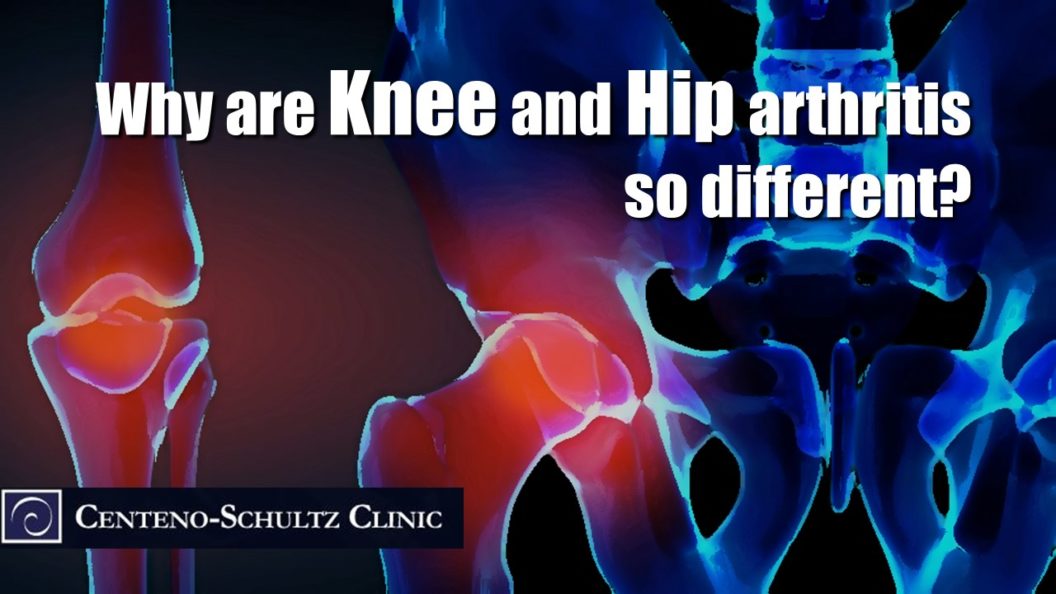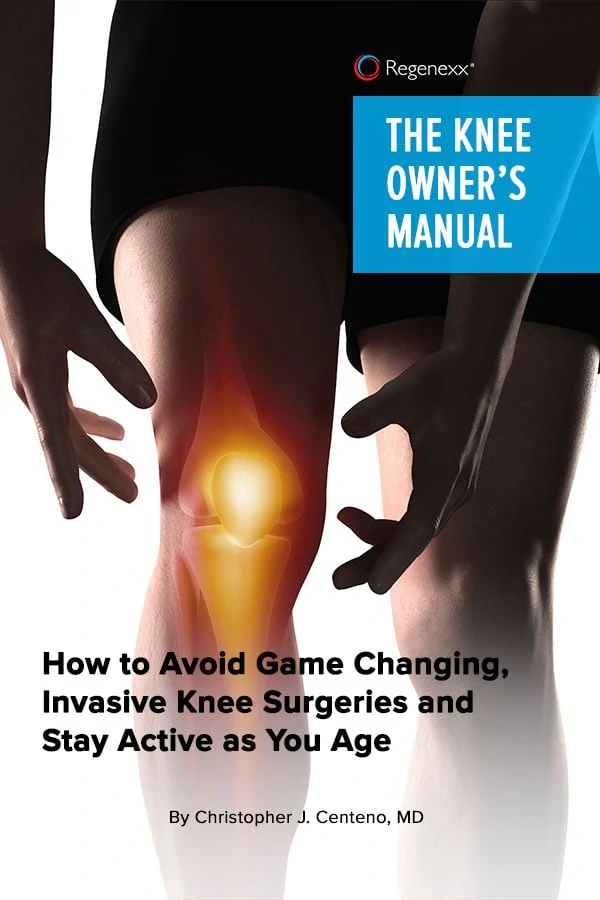While they might share the term arthritis and live just a joint apart, knee and hip arthritis are really two different diseases. In interventional orthopedics, we see patients with knee or hip arthritis every day and have clearly observed these differences ourselves, and research published a couple of years ago has confirmed this. In order to effectively treat patients using regenerative-medicine therapies (i.e., orthobiologics such as stem cells and platelet-rich plasma), being knowledgeable of the differences between knee and hip arthritis and how to approach each is critical.
Today we continue our arthritis series for National Arthritis Month by explaining the differences between knee and hip arthritis.
What Is Arthritis?
At the most basic level, arthritis can occur in any joint and involves the loss of the joint’s protective cartilage and the formation of bone spurs. Common symptoms are pain, stiffness, and swelling in the affected joint. Digging in deeper, however, in recent years it is believed that the definition of arthritis has expanded to include changes in the bone itself, which then leads to problems with the cartilage. One study found that after the initial injury to cartilage, this puts stress on the bone, signaling a molecule that communicates with the bone. The bone reacts by thickening, stretching the cartilage over the thickened bone. This weakens and wears down the cartilage.
So if this is the basic pathology of arthritis, what makes knee and hip arthritis so different? Let’s take a look.
The Differences Between Knee and Hip Arthritis
While the end result is the same—destruction of the joint—there are many differences between knee and hip arthritis.
The first clear and obvious sign that knee and hip arthritis are very different is apparent to any clinician reading a patient’s MRI. When compared to the knee, hip arthritis deteriorates at rocket speed. It can take many years for knee arthritis to progress from a mild form to a more severe form of arthritis. Cartilage loss and bone spur growth tend to occur at a much slower pace. Compare this to hip arthritis, which can progress from mild to severe in as little as one to two years.
Another clear and interesting indicator of differences is bone cysts. Bone cysts are rare in knee arthritis, while in hip arthritis, as the disease progresses and worsens, bone cysts are more the norm than the exception. What exactly is a bone cyst? When a small segment of bone dies, the body encapsulates the dead tissue (forming a hard shell type structure around the dead area), creating a fluid-filled cavity.
We also know from a prior study that the knee is much more capable of repairing itself than the hip is.
More Research Confirms Knee and Hip Arthritis Are Different
Another study also found that the knee cartilage is in a constant state of self-repair and self-maintenance while the hip is not. Why? The extracellular matrix (a substance in the cartilage in which the cells reside) in the cartilage functions at a much younger age in the knee than in the hip. Thirty years younger in fact! So there is very little ability for the hip cartilage to maintain itself by creating new extracellular matrix and cartilage.
Treating Hip Arthritis in Regenerative Medicine Requires a Different Approach
In our own stem cell registry data, we’ve noticed distinct differences over many years in hip and knee arthritis. Generally, hip arthritis stem cell treatment outcomes underperform knee arthritis outcomes. We treat a huge number of mild to severe knee arthritis patients successfully using our Regenexx same-day stem cell procedures. But because hip arthritis is different, we have to approach regenerative medicine treatment for it differently.
While our hip arthritis data shows reasonable outcomes, our cultured stem cell procedures demonstrate better results in comparison to our same-day stem cell treatments. Most severe hip arthritis patients (particularly those over age 55), would likely not be good candidates for the same-day stem cell procedure; however, we have seen promising results in the right hip arthritis candidates using culture-expanded stem cell treatments at our Regenexx site in the Grand Caymans. The hip typically needs the extra stem cells the cultured treatment provides.
Knee and hip arthritis have a similar result—the eventual destruction of the joint. However, the processes by which knee and hip arthritis occur make these two very different diseases. We know this based on structural changes shown on MRI, the speed at which deterioration occurs in the joint, the presence of bone cysts, the inability of the hip joint to repair and maintain itself, and our own registry outcome data.

